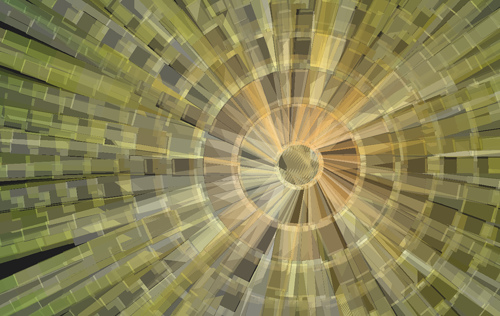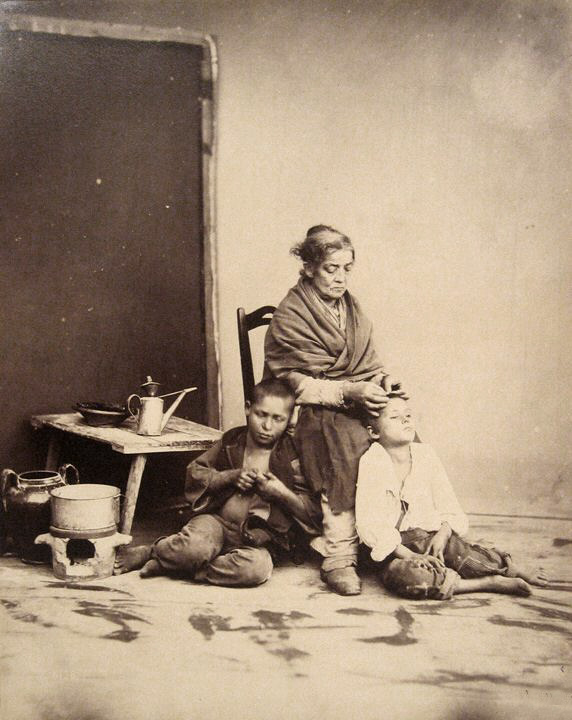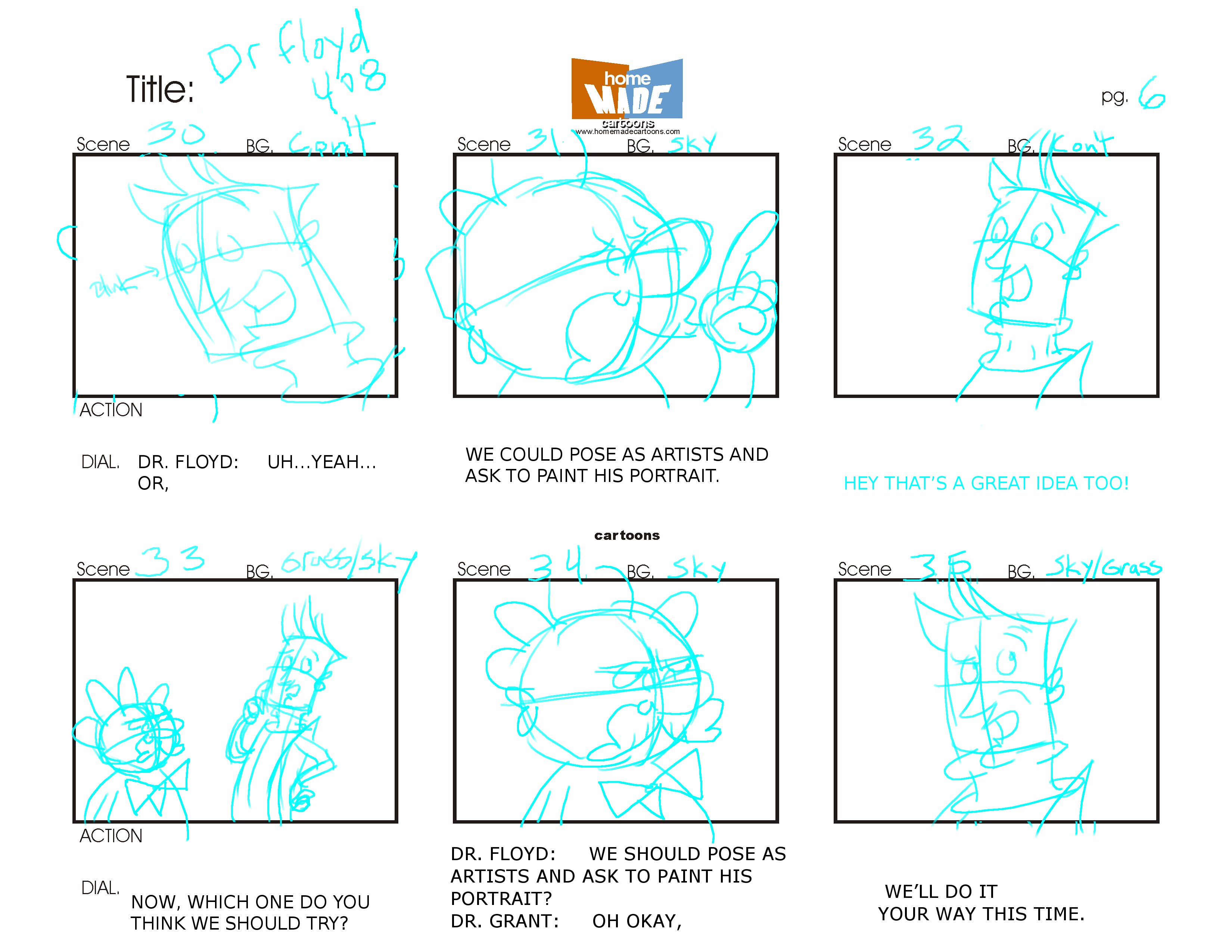|
Comprehensive Layout
In graphic design and advertising, a comprehensive layout or comprehensive, usually shortened to comp, is the page layout of a proposed design as initially presented by the designer to a client, showing the relative positions of text and illustrations before the final content of those elements has been decided upon. The comp thus serves as a draft of the final layout, and (if approved) is used as guide for further design changes and, ultimately, production. Traditionally, the four stages of an illustration or other commercial art creation (e.g., advertisement) are: * Sketch — the initial idea roughly "sketched out" in order to quickly transfer the idea on to a physical substrate * Layout — the idea laid out in relative position for further development * Comp — the idea created in such a way as to closely mimic the final creation, usually as a step toward approval by decision-makers * Finish — the idea rendered in the appropriate medium for sale, displa ... [...More Info...] [...Related Items...] OR: [Wikipedia] [Google] [Baidu] |
Graphic Design
Graphic design is a profession, academic discipline and applied art whose activity consists in projecting visual communications intended to transmit specific messages to social groups, with specific objectives. Graphic design is an interdisciplinary branch of design and of the fine arts. Its practice involves creativity, innovation and lateral thinking using manual or digital tools, where it is usual to use text and graphics to communicate visually. The role of the graphic designer in the communication process is that of encoder or interpreter of the message. They work on the interpretation, ordering, and presentation of visual messages. Usually, graphic design uses the aesthetics of typography and the compositional arrangement of the text, ornamentation, and imagery to convey ideas, feelings, and attitudes beyond what language alone expresses. The design work can be based on a customer's demand, a demand that ends up being established linguistically, either orally or in writin ... [...More Info...] [...Related Items...] OR: [Wikipedia] [Google] [Baidu] |
Advertising
Advertising is the practice and techniques employed to bring attention to a product or service. Advertising aims to put a product or service in the spotlight in hopes of drawing it attention from consumers. It is typically used to promote a specific good or service, but there are wide range of uses, the most common being the commercial advertisement. Commercial advertisements often seek to generate increased consumption of their products or services through "branding", which associates a product name or image with certain qualities in the minds of consumers. On the other hand, ads that intend to elicit an immediate sale are known as direct-response advertising. Non-commercial entities that advertise more than consumer products or services include political parties, interest groups, religious organizations and governmental agencies. Non-profit organizations may use free modes of persuasion, such as a public service announcement. Advertising may also help to reassure employees ... [...More Info...] [...Related Items...] OR: [Wikipedia] [Google] [Baidu] |
Page Layout
In graphic design, page layout is the arrangement of visual elements on a page. It generally involves organizational principles of composition to achieve specific communication objectives. The high-level page layout involves deciding on the overall arrangement of text and images, and possibly on the size or shape of the medium. It requires intelligence, sentience, and creativity, and is informed by culture, psychology, and what the document authors and editors wish to communicate and emphasize. Low-level pagination and typesetting are more mechanical processes. Given certain parameters such as boundaries of text areas, the typeface, and font size, justification preference can be done in a straightforward way. Until desktop publishing became dominant, these processes were still done by people, but in modern publishing, they are almost always automated. The result might be published as-is (as for a residential phone book interior) or might be tweaked by a graphic designer (as ... [...More Info...] [...Related Items...] OR: [Wikipedia] [Google] [Baidu] |
Typography
Typography is the art and technique of arranging type to make written language legible, readable and appealing when displayed. The arrangement of type involves selecting typefaces, point sizes, line lengths, line-spacing ( leading), and letter-spacing (tracking), as well as adjusting the space between pairs of letters (kerning). The term ''typography'' is also applied to the style, arrangement, and appearance of the letters, numbers, and symbols created by the process. Type design is a closely related craft, sometimes considered part of typography; most typographers do not design typefaces, and some type designers do not consider themselves typographers. Typography also may be used as an ornamental and decorative device, unrelated to the communication of information. Typography is the work of typesetters (also known as compositors), typographers, graphic designers, art directors, manga artists, comic book artists, and, now, anyone who arranges words, letters, numbers ... [...More Info...] [...Related Items...] OR: [Wikipedia] [Google] [Baidu] |
Illustration
An illustration is a decoration, interpretation or visual explanation of a text, concept or process, designed for integration in print and digital published media, such as posters, flyers, magazines, books, teaching materials, animations, video games and films. An illustration is typically created by an illustrator. Digital illustrations are often used to make websites and apps more user-friendly, such as the use of emojis to accompany digital type. llustration also means providing an example; either in writing or in picture form. The origin of the word "illustration" is late Middle English (in the sense ‘illumination; spiritual or intellectual enlightenment’): via Old French from Latin ''illustratio''(n-), from the verb ''illustrare''. Illustration styles Contemporary illustration uses a wide range of styles and techniques, including drawing, painting, printmaking, collage, montage, digital design, multimedia, 3D modelling. Depending on the purpose, illustra ... [...More Info...] [...Related Items...] OR: [Wikipedia] [Google] [Baidu] |
Computer-generated Art
Algorithmic art or algorithm art is art, mostly visual art, in which the design is generated by an algorithm. Algorithmic artists are sometimes called ''algorists''. Overview Algorithmic art, also known as computer-generated art, is a subset of generative art (generated by an autonomous system) and is related to systems art (influenced by systems theory). Fractal art is an example of algorithmic art. For an image of reasonable size, even the simplest algorithms require too much calculation for manual execution to be practical, and they are thus executed on either a single computer or on a cluster of computers. The final output is typically displayed on a computer monitor, printed with a raster-type printer, or drawn using a plotter. Variability can be introduced by using pseudo-random numbers. There is no consensus as to whether the product of an algorithm that operates on an existing image (or on any input other than pseudo-random numbers) can still be considered computer-g ... [...More Info...] [...Related Items...] OR: [Wikipedia] [Google] [Baidu] |
Nitpicking (pastime)
Nitpicking is a term, first used in 1956, that describes the action of giving too much attention to unimportant detail. A person who nitpicks is termed as a nitpicker. The terminology originates from the common act of manually removing nits (the eggs of lice, generally head lice) from another person's hair Hair is a protein filament that grows from follicles found in the dermis. Hair is one of the defining characteristics of mammals. The human body, apart from areas of glabrous skin, is covered in follicles which produce thick terminal and f .... As nitpicking inherently requires fastidious attention to detail, the term has become appropriated to describe the practice of meticulously searching for minor, even trivial errors in detail. Nitpicking has been used to describe dishonest insurers and bullying employers, or even bullying family members. [...More Info...] [...Related Items...] OR: [Wikipedia] [Google] [Baidu] |
Stock Photography
Stock photography is the supply of photographs which are often licensed for specific uses. The stock photo industry, which began to gain hold in the 1920s, has established models including traditional macrostock photography, midstock photography, and microstock photography. Conventional stock agencies charge from several hundred to several thousand US dollars per image, while microstock photography may sell for around US$25 cents. Professional stock photographers traditionally place their images with one or more stock agencies on a contractual basis, while stock agencies may accept the high-quality photos of amateur photographers through online submission. Themes for stock photos are diverse, although Megan Garber of ''The Atlantic'' wrote in 2012 that "one of the more wacky/wondrous elements of stock photos is the manner in which, as a genre, they've developed a unifying editorial sensibility. To see a stock image is... to ''know'' you're seeing a stock image." Historically nota ... [...More Info...] [...Related Items...] OR: [Wikipedia] [Google] [Baidu] |
Clip Art
Clip art (also clipart, clip-art) is a type of graphic art. Pieces are pre-made images used to illustrate any medium. Today, clip art is used extensively and comes in many forms, both electronic and printed. However, most clip art today is created, distributed, and used in a digital form. Since its inception, clip art has evolved to include a wide variety of content, file formats, illustration styles, and licensing restrictions. It is generally composed exclusively of illustrations (created by hand or by computer software), and does not include stock photography. History The term "clipart" originated through the practice of physically cutting images from pre-existing printed works for use in other publishing projects. Before the advent of computers in desktop publishing, clip art was used through a process called paste up. Many clip art images of this era qualified as line art. In this process, the clip art images are cut out by hand, then attached via adhesives to a board rep ... [...More Info...] [...Related Items...] OR: [Wikipedia] [Google] [Baidu] |
Storyboard
A storyboard is a graphic organizer that consists of illustrations or images displayed in sequence for the purpose of pre-visualizing a motion picture, animation, motion graphic or interactive media sequence. The storyboarding process, in the form it is known today, was developed at Walt Disney Productions during the early 1930s, after several years of similar processes being in use at Walt Disney and other animation studios. Origins Many large budget silent films were storyboarded, but most of this material has been lost during the reduction of the studio archives during the 1970s and 1980s. Special effects pioneer Georges Méliès is known to have been among the first filmmakers to use storyboards and pre-production art to visualize planned effects. However, storyboarding in the form widely known today was developed at the Walt Disney studio during the early 1930s. In the biography of her father, ''The Story of Walt Disney'' (Henry Holt, 1956), Diane Disney Miller exp ... [...More Info...] [...Related Items...] OR: [Wikipedia] [Google] [Baidu] |
Previsualization
Previsualization (also known as previsualisation, previs, previz, pre-rendering, preview or wireframe windows) is the visualizing of scenes or sequences in a movie, prior to filming. It is also a concept in various creative practices, including animation, performing arts, video game design, and still photography. Previsualization is typically used to describe techniques such as storyboarding, either in the form of sketches (using traditional and/or digital drawing tools) or in digital technology, in the planning and conceptualization of movie scenes. Description The advantage of previsualization is that it allows a director, cinematographer, production supervisor, or VFX supervisor to experiment with different staging and art direction options—such as lighting, camera placement and movement, stage direction and editing—without having to incur the costs of actual production.Bill Ferster (1998-04)"Idea Editing: Previsualization for Feature Films" ''POST Magazine''. Retrieved on ... [...More Info...] [...Related Items...] OR: [Wikipedia] [Google] [Baidu] |
Communication Design
Communication design is a mixed discipline between design and information-development which is concerned with how media communicate with people. A communication design approach is not only concerned with developing the message in addition to the aesthetics in media, but also with creating new media channels to ensure the message reaches the target audience. Some designers use graphic design and communication design interchangeably due to overlapping skills. Communication design can also refer to a systems-based approach, in which the totality of media and messages within a culture or organization are designed as a single integrated process rather than a series of discrete efforts. This is done through communication channels that aim to inform and attract the attention of the people one is focusing one's skills on. Design skills must be tailored to fit to different cultures of people, while maintaining pleasurable visual design. These are all important pieces of information to ad ... [...More Info...] [...Related Items...] OR: [Wikipedia] [Google] [Baidu] |






.png)
